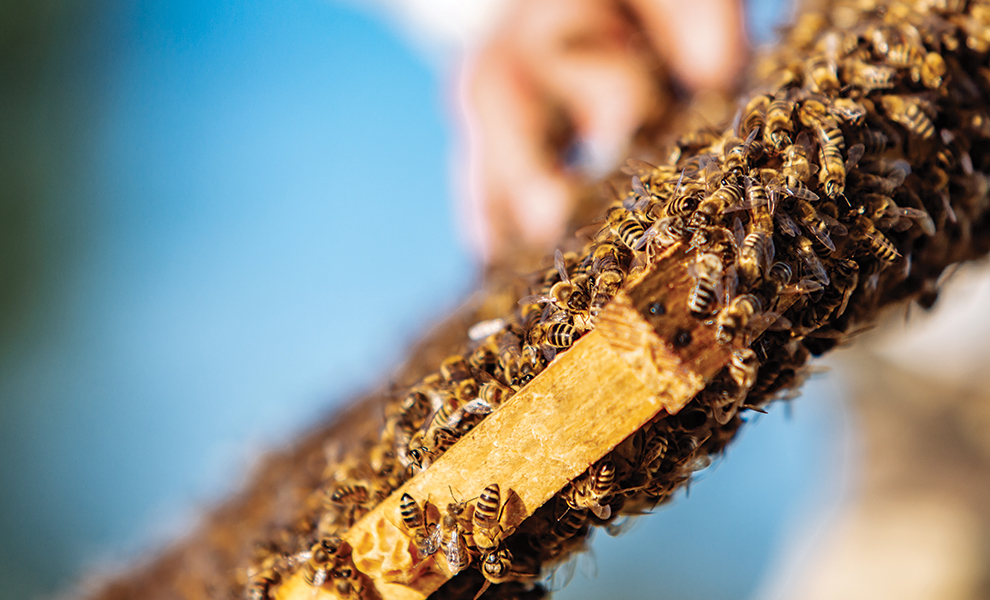
Amazing Physiological Facts About Honeybees
Honeybees are extraordinary creatures, often admired for their complex social structure and critical role in pollination. However, what makes these insects truly fascinating is their unique physiology. From their advanced flight mechanisms to their specialized anatomy that enables them to produce honey, honeybees possess several amazing physiological traits. Understanding these facts not only sheds light on the inner workings of these remarkable insects but also highlights their importance to both ecosystems and human life.
- The Anatomy of Flight: Wings That Work Twice as Hard
Honeybees are known for their agility and speed in flight. A bee’s wings beat at an incredible rate of around 200 times per second, creating a characteristic buzz. This rapid wing movement allows them to reach speeds of up to 15 miles per hour. What’s particularly fascinating is how their flight muscles work. The honeybee’s flight muscles are not directly connected to the wings. Instead, they are connected to the thorax, and the rapid contractions of these muscles create a resonance that causes the wings to beat. This unique mechanism allows the bee to fly in various directions, hover, and maneuver swiftly through the air—skills that are vital for foraging and avoiding predators.
- Compound Eyes: A Superpower of Vision
Honeybees possess two large compound eyes on the sides of their heads, along with three simple eyes (ocelli) on the top of their heads. These eyes provide them with an incredibly wide field of vision, allowing them to detect ultraviolet light, which is invisible to humans. This ability is crucial for foraging, as flowers often have patterns and markings visible only in UV light, guiding bees to nectar-rich areas. Honeybees can see the world in a spectrum of colors, but they are particularly sensitive to blue and ultraviolet light. This unique vision system helps them navigate through fields of flowers and find the best sources of nectar.
- The Amazing Honey Production Mechanism
The honeybee’s digestive system is specially adapted for nectar collection and honey production. When a bee collects nectar from flowers, it stores it in a special stomach called the honey stomach. Once the nectar reaches the hive, the bee regurgitates the nectar into the mouth of another worker bee. This process, known as trophallaxis, allows the nectar to be passed along and undergo enzyme breakdown, converting sugars into a more stable form. The bee then deposits the processed nectar into a hexagonal wax cell within the hive. The high water content of nectar is reduced through the bee’s fanning process, where they use their wings to evaporate the excess moisture, resulting in the thick, syrupy substance we know as honey. This physiological process ensures that honey is stored as a long-lasting energy source for the colony, especially during winter when foraging is not possible.
- A Highly Specialized Stinger: A Defense Mechanism
Honeybees have one of the most specialized defense mechanisms in the insect world: their sting. The stinger is an adapted version of an ovipositor, originally used for laying eggs in some species. When a honeybee feels threatened, it will sting the intruder, injecting venom that causes intense pain. One remarkable physiological aspect of the honeybee’s sting is that, unlike other insects, honeybees can only sting once. This is because their stinger is barbed and, once it penetrates the skin, it becomes lodged in the target. As the bee flies away, the stinger is torn from its body, leading to the bee’s death. Though this self-sacrificial act might seem counterintuitive, it protects the hive by deterring predators and threats from attacking.
- The Hive’s Thermoregulation: A Temperature-Sensitive Society
A honeybee colony is not only a marvel of social organization but also a living, breathing system that needs to maintain an ideal temperature to thrive. Worker bees regulate the temperature inside the hive by shivering to generate heat during cold periods and evaporating water by fanning their wings to cool the hive when it’s too warm. The optimal temperature for the colony is about 95°F (35°C), a constant temperature that supports the development of larvae, the health of the queen, and the overall productivity of the hive. When temperatures drop too low, bees cluster together to preserve heat, while during hot weather, bees work to cool the hive and prevent overheating.
- Advanced Communication: The Waggle Dance
Honeybees have a fascinating way of communicating with one another, especially when it comes to foraging. Bees perform a waggle dance to convey the location of food sources to other members of the hive. The dance involves a combination of body movements that indicate the direction and distance of the food source relative to the sun. The duration of the waggle phase tells the bees how far away the food is, while the angle at which the dance is performed gives them a precise direction. This advanced form of communication allows the hive to work together efficiently, ensuring that foragers know exactly where to find nectar, pollen, or water.
- Honeybee Lifespan: A Life of Purpose
The lifespan of a honeybee varies significantly depending on its role within the colony. Worker bees, which perform tasks such as foraging, guarding the hive, and caring for the queen, typically live for around 6 weeks during the warmer months. In contrast, queen bees can live for several years, producing thousands of eggs each day and ensuring the survival of the colony. Male bees, or drones, have the sole purpose of mating with a queen, and their lifespan is shorter—often just a few weeks. The honeybee’s life is short but intensely productive, with each bee contributing to the success and survival of the colony.
Conclusion
Honeybees are truly one of nature’s most fascinating creatures, with their specialized anatomy and behaviors that ensure their survival and success. From their unique flight abilities and advanced communication methods to their ability to produce honey and regulate the temperature of their hive, honeybees have evolved an array of remarkable physiological traits that make them indispensable to our ecosystems. Understanding these physiological facts not only enhances our appreciation for these small but mighty insects but also underscores the need to protect them, as their survival directly impacts biodiversity and food security across the globe.
At EcoBees, led by our CEO, we are committed to fostering the growth and sustainability of the beekeeping industry in Somalia. EcoBees is recognized as the leading beekeeping consultant in the country, with full acknowledgment from the Somali Government, State levels, and international beekeeping associations. We hold esteemed memberships with ApiTrade Africa and Apimondia in Europe, solidifying our global network and influence within the beekeeping community. Our work supports the development of local beekeepers and ensures that the critical role of honeybees is not only celebrated but also actively protected and nurtured for future generations.



